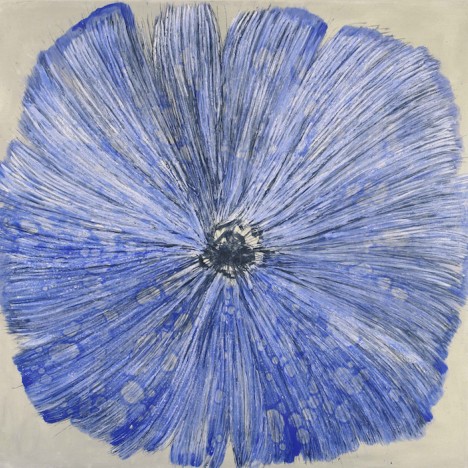"Dousha" ~Flowers and Ballerinas~

2015.06.10 - 2015.07.27
4月 - 6月 10:00~17:00 /
7月 - 9月 10:00~18:00 /
10月 - 3月 10:00~17:00 ※最終日は15:00まで
Gallery2・3
Information
- Period
- 2015.06.10 - 2015.07.27
- First half
- 2015.06.10 - 2015.06.29
- Second half
- 2015.07.01 - 2015.07.27
- Venue
- Gallery2・3
- Open Hours
- 4月 - 6月 10:00~17:00
7月 - 9月 10:00~18:00
10月 - 3月 10:00~17:00
※最終日は15:00まで
※入館は閉館30分前まで - Closed
- Closed Tuesdays
- Ticket
- Free Entry
- Presence of the Artist
- JUNE 10(wed)11(thu)
About the Exhibition
For this exhibition entitled «Doucha» Flowers and Ballerinas» by the artist, presents about thirty works by
Lavrenty Bruni with a common feature: flower poetics for intimist and monumental oil paintings, very large
size watercolours on Arches paper. This talented Russian painter dedicates his art passionately to flowers
since quite thirty years. He is already very famous in his own country and was also discovered with great
interest in other cities of Europe, USA and Japan.
Flowers are at the base of Lavrenty Bruni’s language and are developed in all colors and size, sometimes
alone, sometimes in bouquets, sometimes complete, sometimes burst into fabulous petals rains. Under the
pressure of his emotional impulse, the artist lets micro or macro petals spring out like coloured spots with a
few paintbrush or spatula strokes, small or enormous, depending on the intimist or monumental format. For
Bruni, texture becomes an essential element that appears very differentiated from a work to the other : in oil
paintings especially, the thick paste generously extracted from a whole tube is instinctively spread in one
stroke, barely mixed with streaks of other vivid colors. It exudes all the energy of the artist who aims at the
expression of a free emotion. Bruni shapes the paste in a threedimensional
way, fights with the material,
make the hues vibrate sensuously, looking for the shimmering pure colours, veined by their mutual
interactions.
In his largescale
oil paintings and watercolors, the artist explores also the complexity of dance, capturing the
transition and change in a static image. Echoing the play’s theme of reality versus illusion, Bruni’s dancers
are rendered in pale, monochromatic tones and posses an ethereal quality. The abstracted backgrounds in
these paintings conceal their location, further blurring the lines of reality while the recurring motif of flower
petals invokes the magical Fairyland. Bruni often uses flowers in his paintings and is famous for his masterful
canvasses of bouquets and scattered flowers.
Like other artists preoccupied with dance—Degas, Léger, Jacob, and Renoir, to name a few—Bruni’s
paintings are born from meticulous observations of dancers’ routines. The artist’s models are prima ballerinas
of the Bolshoi Theater whose names are familiar to ballet connoisseurs. Yet the artist is not interested in
making these famous dancers recognizable, focusing solely on capturing the movements of their bodies and
conveying balance, grace, and radiance associated with the art of ballet and, above all, his own deep
sensitivity to and appreciation of beauty.
Profile
RAVRENTY BRUNI
Born into an artistic dynasty, Lavrenty Bruni (b. 1961) is one of Russia’s leading contemporary artists. His
aristocratic family, whose ancestors came from Mendrisio (Ticino, the Italian speaking part of Switzerland)
and emigrated to the Tsarist Empire in the 18th Century, has produced at least one painter in every
generation. Lavrenty Bruni completed his studies of classical painting and drawing at the University of
Moscow. He exhibits in solo and group shows and has works in private collections worldwide, including
Australia, Japan, The United States of America, The United Kingdom, Russia, Hong Kong, Israel, South
Africa, France, and Belgium. He lives and works in Moscow, Russia.
2